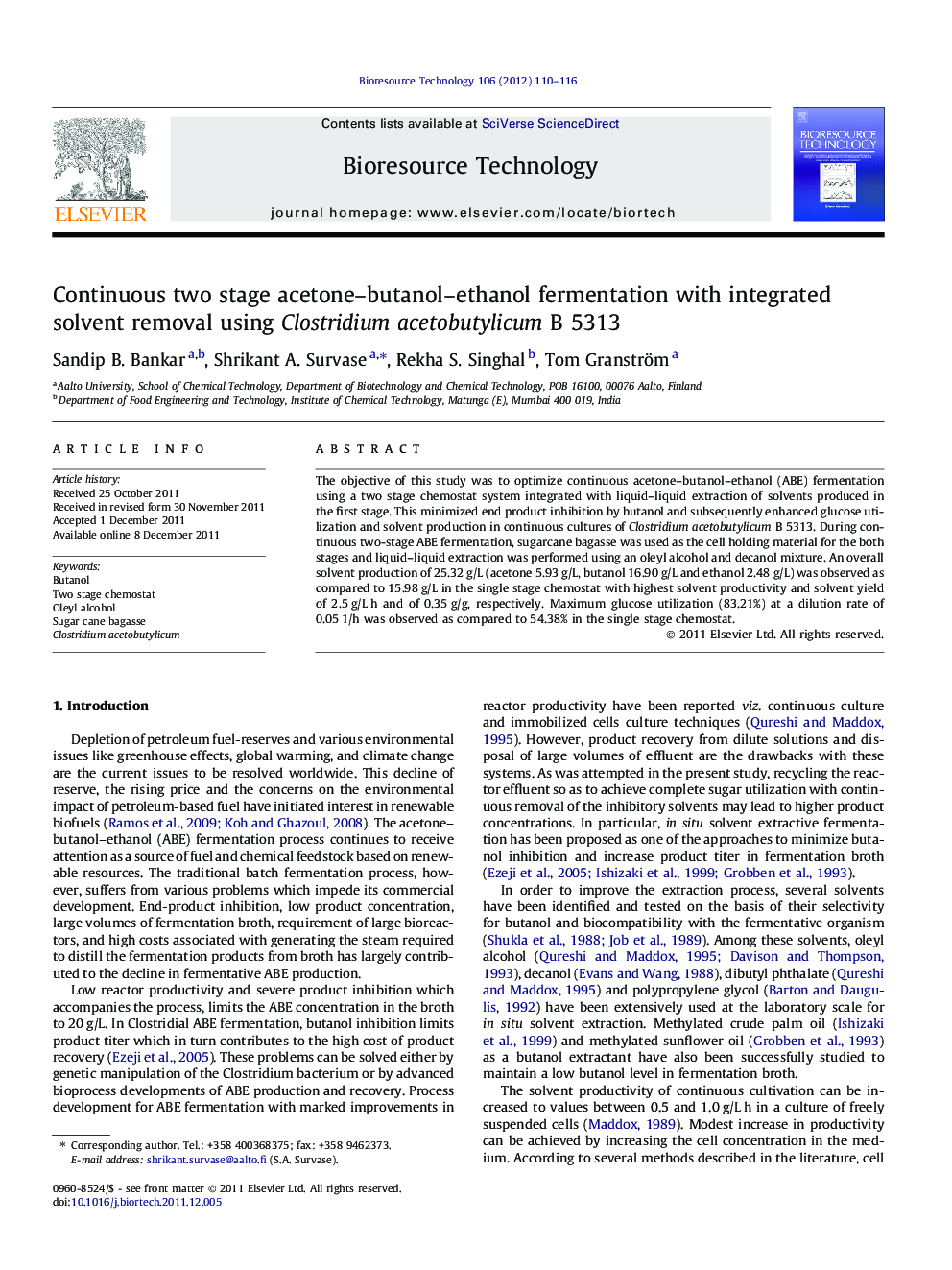| Article ID | Journal | Published Year | Pages | File Type |
|---|---|---|---|---|
| 681670 | Bioresource Technology | 2012 | 7 Pages |
The objective of this study was to optimize continuous acetone–butanol–ethanol (ABE) fermentation using a two stage chemostat system integrated with liquid–liquid extraction of solvents produced in the first stage. This minimized end product inhibition by butanol and subsequently enhanced glucose utilization and solvent production in continuous cultures of Clostridium acetobutylicum B 5313. During continuous two-stage ABE fermentation, sugarcane bagasse was used as the cell holding material for the both stages and liquid–liquid extraction was performed using an oleyl alcohol and decanol mixture. An overall solvent production of 25.32 g/L (acetone 5.93 g/L, butanol 16.90 g/L and ethanol 2.48 g/L) was observed as compared to 15.98 g/L in the single stage chemostat with highest solvent productivity and solvent yield of 2.5 g/L h and of 0.35 g/g, respectively. Maximum glucose utilization (83.21%) at a dilution rate of 0.05 1/h was observed as compared to 54.38% in the single stage chemostat.
► High production of solvents with maximum utilization of glucose (83%). ► Two-stage chemostat system with immobilized biomass. ► Two-stage chemostat system with integrated solvent removal. ► Highest solvent productivity among similar studies.
